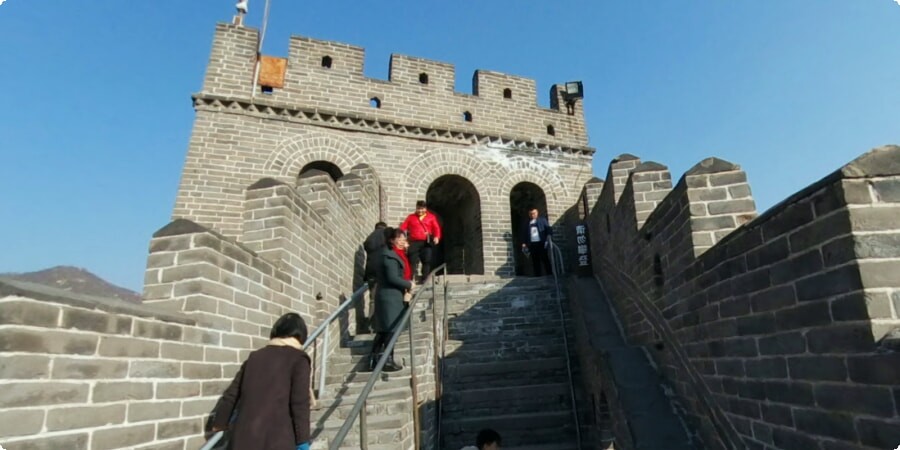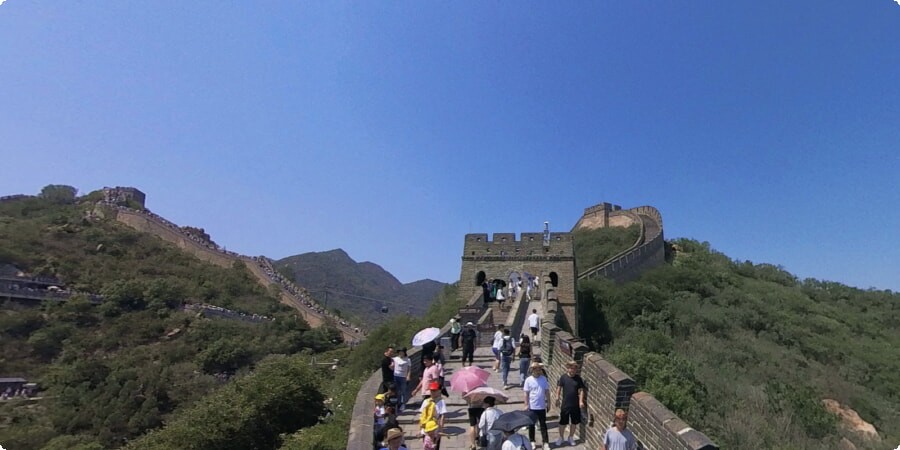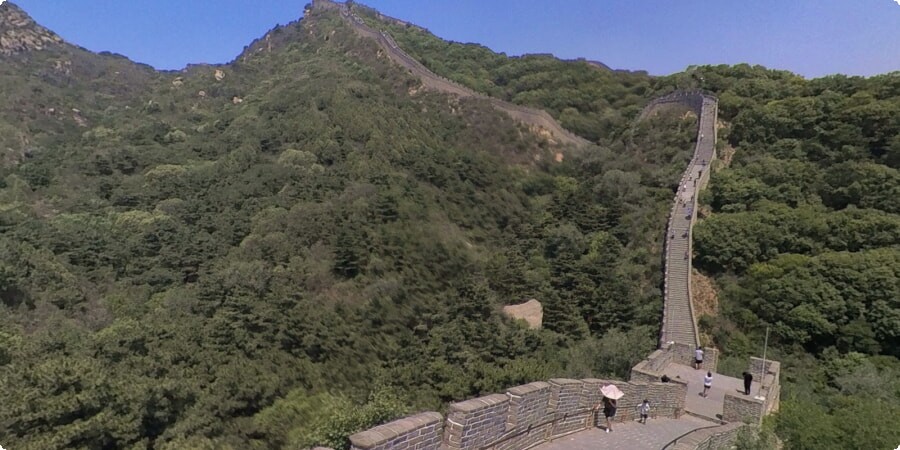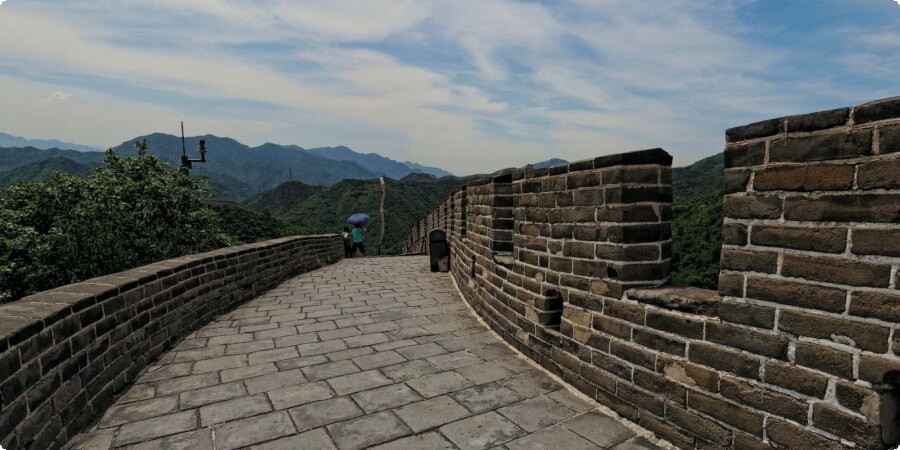How to Make the Most of Your Visit to the Great Wall of Badaling
The Great Wall of China stands as a monumental testament to human ingenuity, endurance, and ambition. Stretching over 13,000 miles, it snakes through rugged terrains, serene valleys, and steep mountains, offering glimpses into China's rich history and cultural heritage. Among its many sections, Badaling holds a special place. Located about 70 kilometers north of Beijing, Badaling is the most visited section of the Great Wall and is renowned for its well-preserved state and accessible paths.
Constructed during the Ming Dynasty (1368–1644), Badaling was strategically significant, serving as a crucial point for defense against invasions. Today, it is a UNESCO World Heritage site and a symbol of China's architectural prowess. Badaling’s popularity among tourists is due to its proximity to Beijing, relatively easy access, and the stunning views it offers. The section has been extensively restored, making it an ideal spot for visitors of all ages and abilities to experience the grandeur of the Great Wall.
Visiting the Great Wall of Badaling is not just about admiring a historical structure; it’s about immersing yourself in a narrative that spans centuries. As you walk along its stones, you can almost hear the whispers of ancient warriors and the clamor of historical events that have shaped this iconic landmark. For those eager to delve deep into the history and beauty of China, a trip to Badaling is an unforgettable experience.
Best Times to Visit the Great Wall of Badaling
Choosing the right time to visit Badaling can significantly enhance your experience. Spring (April to June) and autumn (September to November) are generally considered the best seasons to explore this part of the Great Wall. During these months, the weather is mild, the skies are clear, and the surrounding landscape bursts into vibrant colors — cherry blossoms in spring and a tapestry of red, orange, and yellow leaves in the fall.
Visiting early in the morning, around sunrise, can also provide a more tranquil experience. Not only will you avoid the peak crowds, but you will also be rewarded with breathtaking views as the sun casts its golden glow over the wall and the mountains. Alternatively, late afternoon visits offer the opportunity to watch a magnificent sunset, which bathes the ancient stones in warm, amber light, creating a magical atmosphere.
If you’re looking to capture the wall in its wintry splendor, visiting during winter (December to February) can be a unique experience. The wall, covered in snow, looks like a scene from a fairy tale. However, do keep in mind that temperatures can be extremely cold, and the paths may be slippery. It's crucial to dress warmly and wear appropriate footwear to ensure safety.
Lastly, it’s worth noting that weekends and national holidays can be particularly crowded, as both tourists and locals flock to Badaling. To avoid the crowds, plan your visit on a weekday if possible. For those driving from Beijing, consider booking a car at Beijing Daxing International Airport for a convenient and comfortable journey. You can find car rental options here.

How to Get There: Transportation Options
Getting to the Great Wall of Badaling from Beijing is straightforward, with several transportation options available to suit different preferences and budgets.
1. Train: The most popular and economical way to reach Badaling is by taking the S2 train from Beijing North Railway Station (also known as Xizhimen Station). The journey takes approximately 1.5 hours, offering scenic views of the countryside as you approach the Great Wall. The train drops you off at Badaling Railway Station, from where it is a short walk to the entrance of the wall. Be sure to check the train schedules in advance, as they can vary depending on the season.
2. Bus: Another affordable option is the Bus No. 877 from Deshengmen Bus Station in Beijing. This bus takes about an hour to reach Badaling and is a good choice for those who prefer a direct route without transfers. The bus station is easily accessible by subway, and tickets can be purchased on the spot.
3. Private Car or Taxi: For a more flexible and comfortable journey, especially for families or groups, hiring a private car or taking a taxi is a great option. This mode allows you to travel at your own pace, stop along the way for pictures or rest, and avoid the hassle of public transportation. The drive takes about an hour from Beijing city center, depending on traffic. For those interested in booking a car for their trip, consider using a reputable service to ensure a smooth and reliable experience. You can explore options for renting a car in China here.
4. Guided Tours: If you prefer a more structured visit, numerous tour operators in Beijing offer day trips to Badaling, often including transportation, entrance tickets, and a guide who can provide deeper insights into the history and significance of the Great Wall. This is a convenient option for first-time visitors who want a comprehensive experience without the stress of planning.
No matter which transportation option you choose, planning ahead and arriving early can help you make the most of your visit to the Great Wall of Badaling.

Navigating the Badaling Section: Key Spots to Explore
The Badaling section of the Great Wall is well-known for its stunning vistas and historical significance. Here’s how to make the most of your visit:
1. The Wall Itself: The primary attraction at Badaling is, of course, the Great Wall. The well-preserved ramparts provide an excellent vantage point for panoramic views of the surrounding mountains and valleys. The section here is relatively flat compared to other parts of the Wall, making it more accessible for visitors of all fitness levels. Start your walk from the main entrance and head towards the Watchtower No. 8 for some of the most iconic views and photo opportunities.
2. The Great Wall Museum: Located near the entrance, the Great Wall Museum offers fascinating insights into the history and construction of the Wall. Exhibits include ancient artifacts, detailed models, and multimedia presentations that help bring the story of the Great Wall to life. It’s a great place to visit before or after exploring the Wall itself.
3. The Scenic Spots: Look out for several key scenic spots along the Wall, such as The North Platform and The South Platform. These areas are perfect for taking in the sweeping landscape and snapping some memorable photographs. For a unique experience, consider walking up to the “Juyongguan Pass” (located to the west of Badaling) which offers spectacular views and a bit of historical context.
4. The Cable Car and Chairlift: To experience the Wall from a different perspective, take the cable car or chairlift to the top of the Wall. These rides offer breathtaking aerial views and a chance to see the Wall winding through the mountains from above. Once at the top, you can enjoy a more relaxed stroll along the elevated paths.
5. The Ming Tombs: Although not part of the Wall itself, the nearby Ming Tombs are worth a visit if you have time. They provide further historical context and are a significant part of China’s cultural heritage.

Preparing for Your Visit: What to Bring and Wear
Proper preparation can greatly enhance your experience at Badaling. Here’s a checklist of what to bring and wear to ensure a comfortable and enjoyable visit:
1. Clothing: Wear comfortable and weather-appropriate clothing. In summer, light, breathable fabrics are ideal, while in winter, layering and thermal wear are recommended. Good walking shoes or hiking boots are a must, as the terrain can be uneven, even on the well-preserved sections.
2. Essentials: Bring plenty of water to stay hydrated, especially if you’re visiting during the warmer months. Snacks can also be handy, as there are limited food options directly on the Wall. Don’t forget sunscreen, a hat, and sunglasses to protect yourself from the sun.
3. Camera Gear: A camera or smartphone is essential for capturing the stunning views. If you plan to take many photos, consider bringing extra batteries or a portable charger, as you may not find charging facilities readily available.
4. Travel Guide and Maps: While there are signs and information boards on the Wall, having a map or a travel guide can be useful for planning your route and learning more about the different sections.
5. Personal Safety Items: A small first-aid kit is a good idea, including items like band-aids and antiseptic wipes. Also, if you have any specific medical needs, be sure to bring necessary medications.
Understanding the History and Architecture
To truly appreciate the Great Wall of Badaling, it’s helpful to understand its history and architectural features:
1. Historical Context: Badaling is part of the Ming Dynasty (1368–1644) Great Wall, constructed to protect the northern borders of the Ming Empire from Mongol invasions. It was built with a combination of stone and brick and features impressive fortifications, including watchtowers and bastions. The Wall at Badaling is one of the best-preserved sections, thanks to extensive restoration efforts.
2. Architectural Features: The Great Wall’s design includes several distinctive features:
- Watchtowers: Strategically placed along the Wall, these towers provided lookout points and were used to signal warnings of approaching enemies.
- Battlements: The Wall’s crenellated battlements allowed defenders to shoot arrows while staying protected.
- Fortified Gates: Badaling includes several fortified gates, which were used for both defense and controlled entry.
3. Construction Techniques: The Wall was constructed using a combination of tamped earth, wood, and stone. The construction techniques varied depending on the region and the available materials. In Badaling, you can see the use of large bricks and stone blocks, which were meticulously fitted together to create a durable structure.
4. Cultural Significance: The Great Wall is more than just a physical barrier; it’s a symbol of China’s historical resilience and engineering prowess. It reflects the ingenuity of ancient Chinese builders and their ability to adapt to the challenging terrain.
Understanding these aspects will deepen your appreciation of the Great Wall and enhance your visit to Badaling. To make your trip even smoother, consider booking a car in China for added convenience and flexibility. You can explore car rental options here.

Dining and Refreshments: What to Expect
When visiting the Great Wall of Badaling, you’ll find a range of dining options to suit various tastes and budgets. Here’s what you need to know:
1. On-Site Dining: Near the entrance and along the Wall, there are several restaurants and food stalls offering a variety of Chinese and international cuisines. You can enjoy traditional dishes like dumplings, noodles, and local snacks. Be sure to try some local specialties, which can be a delightful addition to your visit.
2. Bring Your Own Snacks: If you prefer to have a picnic or need a quick snack while exploring, consider bringing your own food and drinks. There are designated picnic areas where you can sit and enjoy your meal with a view of the Wall. Remember to pack light, portable snacks and plenty of water.
3. Dining Nearby: For a wider range of dining options, you might want to explore the nearby town of Badaling. Here, you’ll find a variety of restaurants offering both local and international dishes. This can be a great way to experience more of the local cuisine and culture after your visit to the Wall.
4. Facilities and Services: Basic amenities such as restrooms and rest areas are available throughout the site. While there are food and beverage services, they can be limited in peak tourist seasons, so plan accordingly to avoid long waits or shortages.
Tips for a Smooth Visit
To ensure a seamless and enjoyable experience at the Great Wall of Badaling, keep these tips in mind:
1. Plan Ahead: Visit the Great Wall during the early morning or late afternoon to avoid the peak crowds. Weekdays are generally less crowded than weekends. Checking the weather forecast in advance can help you plan for the best possible conditions.
2. Purchase Tickets in Advance: To save time, purchase your tickets online before your visit. This will help you bypass the lines at the entrance and allow you to head straight to the Wall.
3. Stay Hydrated and Rested: The walk along the Wall can be physically demanding, especially if you plan to cover a significant distance. Drink plenty of water and take regular breaks to rest and enjoy the scenery.
4. Respect the Rules: Follow the guidelines and rules set by the park authorities. Stay on designated paths, avoid littering, and be considerate of other visitors. This helps preserve the site and ensures a pleasant experience for everyone.
5. Be Mindful of Accessibility: While the Badaling section is one of the most accessible parts of the Great Wall, it still involves walking on uneven surfaces. Wear comfortable shoes and be prepared for some steep sections. If you have mobility issues, consider using the cable car or chairlift to minimize the walking required.
6. Capture the Moment: Don’t forget to take plenty of photos to remember your visit. The Great Wall offers incredible photo opportunities from various vantage points, so make sure to capture the beauty of this historic site.
Beyond the Great Wall: Other Attractions in the Area
While the Great Wall of Badaling is the main attraction, there are several other interesting sites and activities nearby that can enrich your visit:
1. The Ming Tombs: Located to the west of Badaling, the Ming Tombs are an important historical site and a great place to explore after visiting the Wall. This collection of mausoleums houses the remains of 13 Ming Dynasty emperors and offers insights into ancient Chinese burial practices and imperial history. Learn more about the Ming Tombs on Wikipedia.
2. Badaling Wildlife World: If you’re traveling with family or have an interest in wildlife, Badaling Wildlife World is a fun destination. This large safari park features a variety of animals, including pandas, tigers, and bears, in a naturalistic setting. It’s a great place for a break from historical sightseeing.
3. The Great Wall Museum: Located near the entrance of the Badaling section, the Great Wall Museum offers additional context and exhibits related to the Wall’s construction, history, and significance. It’s a valuable stop for those wanting to deepen their understanding of this monumental structure.
4. Local Markets and Shops: Explore local markets and souvenir shops in the Badaling area. You can find traditional crafts, local snacks, and souvenirs to remember your visit. It’s a good opportunity to pick up unique items and support local artisans.
For a comfortable and convenient stay during your visit to the Great Wall, consider booking a hotel in China through this link. It will help you find a suitable place to relax and explore more of the region.